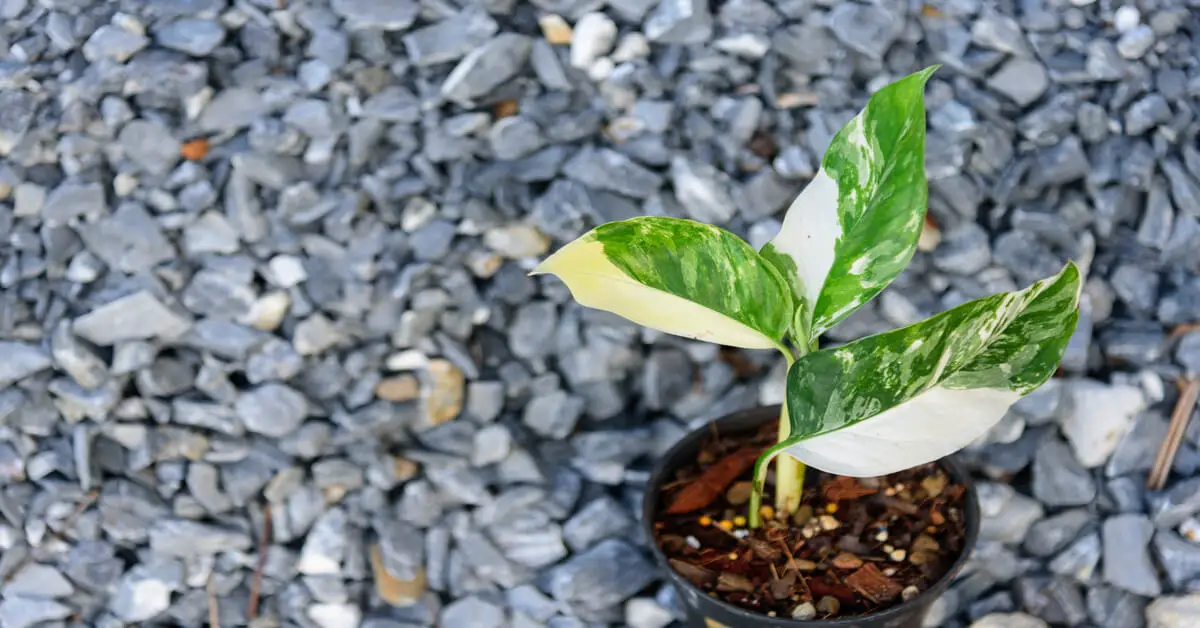Monstera lechleriana is a relatively fast-growing, tropical variety. Other names for the Central American evergreen plant include Monstera maxima and Monstera henry-pittieri.
Lechleriana are noted for their large, deep green leaves and pronounced fenestration. As the plant grows, its leaves begin to fan out. Overtime, you can expect it to get several feet tall as this is a climbing variety.
While the Monstera lechleriana is found in rainforests, it can thrive in an indoor space with the right conditions.
Monstera Lechleriana Care
This houseplant is easy for just about anyone to take care of. Its need for little maintenance makes it a great pick even for those without green thumbs.
With proper care, this variety can last many years. Follow our instructions below to provide a healthy environment for your lechleriana.
Soil
Monsteras are known for doing best in fast-draining soil with proper aeration.
Due to their preference, consider using cactus soil for your Monstera lechleriana. Feel free to add perlite and extra peat moss for better draining capabilities.
Watering
The thicker, heavier leaves of lechleriana make it hardier than other Monsteras. However, don’t let your lechleriana dry out too much.
You’ll know it’s time to water your Monstera lechleriana when the top 3 to 4 inches of its soil are dry. Water it until water drains from the bottom of its pot.
In the right environment, expect to water your lecleriana once every 7 to 10 days.
Lighting
To prevent burning its leaves, avoid placing your Monstera in direct light. It prefers bright, indirect illumination.
An east-facing window is most ideal for lechleriana. This way, any direct sunlight it gets will be less-harsh morning light.
Humidity & Temperature
Lechlerianas like temperatures between 60 to 85 degrees Fahrenheit and a humidity level around 40%. Place your plant in a bathroom or kitchen to give your plant extra humidity if necessary.
Fertilizing
Your Monstera lechleriana is best fertilized during the warmer months, which is typically when they experience a growth spurt. Fertilize your lechleriana once or twice a month. For best results, choose a fertilizer specifically for aroids.
Propagation
Monstera lechleriana can be propagated via placing a cutting in water or soil. If planting in water, plant in soil once roots appear.
The air layering method is another way to propagate a Monstera lechleriana. This method tends to have a high success rate. However, according to the University of Nevada, air layering can take weeks or months.
Air layering involves wrapping the wound of your cutting in damp sphagnum moss. Tie the moss off with string. Secure a piece of plastic over the moss. Unwrap the plastic every few days, and spray the moss. Replace the plastic. Once roots develop, it can be planted in soil.
Diseases & Pests
Common pests of this variety include brown scale, mealybugs, thrips, spider mites, and aphids. When pests are present, the leaves often turn yellow, have brown spots, and/or droop.
Monstera lechleriana tend to be very hardy. However, root rot is one disease you may encounter. With root rot, lechleriana often have mushy, black stems and a foul odor. The University of Wisconsin horticulture department recommends reducing soil moisture in an attempt to save your root-rotted plant.
Toxicity
Both humans and pets can experience a reaction to the Monstera lechleriana if its parts are ingested. This is due to its calcium oxalate crystals.
Monstera Lechleriana Variegated

The Monstera lechleriana has green leaves. However, there is a variety called Monstera lechleriana albo with variegated foliage. It’s also referred to as Monstera lechleriana variegata.
This variegated variety is newer on the market. That said, its numbers are limited, and its price isn’t cheap. Even just buying a cutting can be pricey. But if you love the contrast of its green and white leaves, it might be for you.
Monstera Lechleriana vs Adansonni vs Laniata
Monstera lecheleriana, adansonii, and laniata all feature hole-y, green leaves and grow many feet tall. They’re also all popular houseplant varieties. However, they have differences.
Lechleriana and adansonni are both climbers while laniata has a bushier growth habit. Of the three, Monstera lechleriana have the smallest holes in their leaves. Meanwhile, laniata have the strongest fenestration with elongated holes that extend closer to its leaves’ centers.
Choose a Monstera adansonii for a fast-growing variety with smaller, more delicate leaves. If you prefer a thicker, stronger variety, choose a lechleriana. And if you like a houseplant that is lighter green with more holes in its leaves, consider a laniata.
Conclusion
While difficult to find, the Monstera lechleriana is a favorite variety of houseplant. Many love it for its fenestrated foliage. Plus, its tall, climbing growth habit can give the impression that your interior space is taller than it actually is. If you can get your hands on one, expect the lecleriana to grow quite quickly with minimal maintenance.

